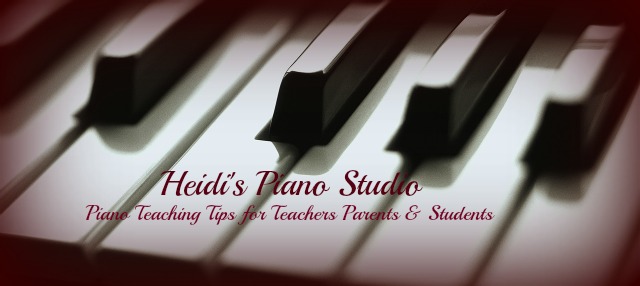4 Creative Ways to Improve Rhythm Through Song
1. Add lyrics to sing to wordless songs or tricky rhythm passages
Caterpillars and Spiders= Rhythmic Success!
Recently my son was learning struggling to accurately play the eighth note rhythms in "Theme and Variation" (Piano Adventures Performance Book 2A). I sung some impromptu lyrics to help fix the problem.
In contrast to the steady quarter note theme ("A spi-der bit my nose----- off")
the variation changes to eighth notes ("A cat-er-pill-ar bit my nose----- off")
Singing lyrics that matched the rhythm fixed the problem immediately and the quirky lyrics made the rhythm unforgettable. "A caterpillar bit my nose off, than a caterpillar bit my toe. I think I want to make some caterpillar stew. Would you like some stew too?"
Although I also teach numeric counting as well (4, 1+,2+,3 4, 1-2), for many students adding lyrics to match the rhythms is much more effective. Suzuki style "Pepperoni Pizza" scales,
Piano Safari "Zechariah Zebra" Technique Songs and the Piano Adventures 2A "Famous People" piece that pair rhythm with familiar words are powerful tools to aid in rhythm development.
2. Encourage rhythm compositions introducing the sounds of rhythms before they encounter them in their music.
Layton Music Candy Bar Rhythms - Challenge students to compose a Candy Bar Melody using all of the candy bar rhythm cards. The lyrics for me would be something like this "My favorite candy is not Butterfinger, Nestle Crunch or Reeses Peanut Butter. Twix and Milky Way both taste great, but I like Snickers best!" I'll have to admit that my less creative compositional mind keeps on reverting to the tune of the "Old Gray Mare."
Or you could try a variation to match the interests of your students
Animals: Bear(quarter), Lion (2 eighths), Alligator (4 sixteenths)
Bugs: Bug(quarter), Bee-tle (2 eighths), Cat-er-pill-ar (4 sixteenths)
(Let's Play Music)
Pies: Mince (quarter), Ap-ple (2 eighths), Hu-ckle-ber-ry (4 sixteenths), Rasp-ber-ry
Candy Bars: Twix(quarter), Snick-ers (2 eighths), Butter-finger (4 sixteenths)
Layton Candy Bar Rhythm Cards
Another great resource is the
Teach Piano Today "Trash to Treasure" Composition activity.
3. Teach Rhythm Names through song.
Songs can also serve as a mnemonic device to help students remember the names of notes and rests.
Note Names -
Piano Adventures Primer "Quarter Note" It's got a head and a stem and its all colored in.
Rests -
Music k8.com Give it a Rest
4. Spice up (Boring) Scales by Singing and Playing Rhythm Variations
Instead of playing a 1 8va ascending scale with quarter notes, challenge students to play a "Twix, Snickers, Butterfinger, Twix" or "Caterpillar, Bug, Beetle, Bug"variation. The possibilities are endless with a little imagination.
Related Posts:
Post 1: Teaching Basic Keyboard Concepts Through Song
Post 2: Teaching Technique Through Song
Post 3: Chord Progressions and Transposition
Post 4: Ear Training Through Song
Post 5: Theory and Tempo













































